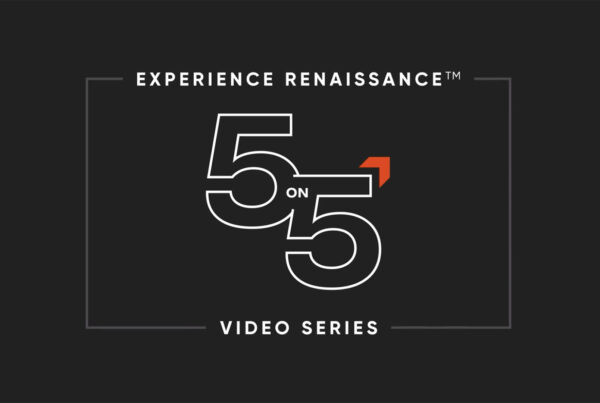
In a landscape oversaturated with transient marketing crazes that often lack substance and clarity in application, finding deeper, more resonant connections with attendees is more important now than ever.
Examining human truths is a different way to think about attendee behavior. Human truths are rooted in insights specific to people’s emotions, going beyond the fleeting. When thinking about events and attendees, experience design should be based on what individuals value in their everyday and professional lives—a desire to learn, explore, and connect. These truths should inform what trends brands follow.
Before crafting an event strategy, it's crucial to research your audience to understand their personal and professional priorities. By exploring these overlaps and asking qualitative questions, event organizers can design tailored experiences that align with their desires and goals, leading to more meaningful and impactful events.
Let’s uncover three examples of human truths and how they can be applied to trends and used in experience design strategies for greater engagement and a more personalized approach.
The Omakase Effect
In Japanese, “omakase” literally means “I leave the details up to you.” In the U.S., the concept gained popularity in the 1990s in sushi restaurants. When ordering omakase, diners entrust the chef to choose the entire meal—essentially, a personalized experience crafted by an expert. It’s simple to relate this concept to human truths: people want to feel seen, heard, and have a customized experience made just for them. This level of detail and personalization is why omakase is as popular at sushi restaurants today as it was in the 90s.
Personalization is a fundamental human truth, as people seek experiences and offerings that reflect their individuality. The “omakase effect” goes one step further, tapping into the emotional side of the attendee. Just like sitting down for a chef-prepared omakase experience, the attendee trusts the “expert” to curate experiences informed by this desire for unique, tailored engagements. Neutrogena is using this method with its Skin360® technology, using AI to help measure a customer’s face by recognizing dark spots or lines and recommending a skincare routine for that individual’s specific needs. The selfie-based skincare analysis is a trend that has allowed Neutrogena to expand into retail stores so shoppers can scan their skin right in the makeup aisle, using technology to create a customized skincare routine specifically designed for them.
Similarly, in event design, the omakase effect refers to tailored experiences where the content individuals should consume, the people attendees should meet, and the areas they should explore are continuously served up in real time.
Meaningful “Ownable” Moments: What happens here can ONLY happen here
This summer’s sensation is the rise of the Midwest Princess, Chappell Roan, who has dominated TikTok feeds and drawn thousands of individuals to see her sets at music festivals. The cultural phenomenon (or “Femininomenon”) has created an eager following of fans: what costume will she wear? How big will the crowd be? What will she say on stage? People want to be part of the moment, both in person and online, which is a fundamental human truth: we seek unique experiences that foster a feeling of belonging.
When catering to that innate human truth, brands want unique yet relatable experiences that can subvert expectations and make people feel special and connected to others. They create “ownable” moments: distinctive points in a brand experience that can evoke strong emotions you can’t get anywhere else. These “must-experience” moments in time become crucial in differentiating a brand and building attendee affinity.
By creating social-first, can’t-miss experiences that continuously connect with attendees, experiential marketers craft a journey that is unique and unforgettable, where the anticipation of what’s to come fuels continuous engagement. Attendees leave with the ultimate payoff: the sentiment, “I can only get ‘it’ here.”
Authenticity in Action
In an age where consumers are increasingly mindful of their choices, they seek brands that resonate with their values and ethics. People gravitate toward what matches their values and beliefs.
This human truth informs the trend “brand ethos as lifestyle,” emphasizing that doing the right thing—being good to each other and avoiding harm—is not just a corporate stance but a way of living. Brands that align their value propositions with ethical practices and genuine care for their community create a strong, authentic connection with their audience. REI, a top-recognized company by its customers for social impact, shared in an announcement that by 2025, brands representing science-aligned emissions targets would represent over 55% of their annual sales volume. In addition, REI gives back by supporting these sustainable-aligned brands with workshops and partnerships with industry initiatives like OIA’s Climate Action Corps. By implementing these standards, the company uses its market influence to develop a more sustainable and inclusive retail industry—and consumers are getting on board.
Embracing “brand ethos as a lifestyle” in experiential design creates an experience with a genuine sense of authenticity in which the brand’s actions and messaging reflect a lived commitment to positive change. When achieved, attendees feel they are on a journey that is ever evolving. It’s where loyalty lives.
How Do Companies Act on Human Truths to Inform Trends?
The real truth is that these human truth examples are just the tip of the iceberg. Beyond the omakase effect, ownable moments, and brand authenticity, there are plenty of universal truths that can inform how event marketers see trends emerging.
To connect with audiences, you must first understand your brand’s message and what it stands for. Identify fundamental insights into human behavior through research and analyze current industry trends to see how they align with these three truths and your brand message. You can then tailor strategies that not only meet enduring human needs but also anticipate future trends.
In a world where consumers are bombarded with countless marketing messages, understanding and applying human truths in an event strategy is essential to forging better connections with audiences.

